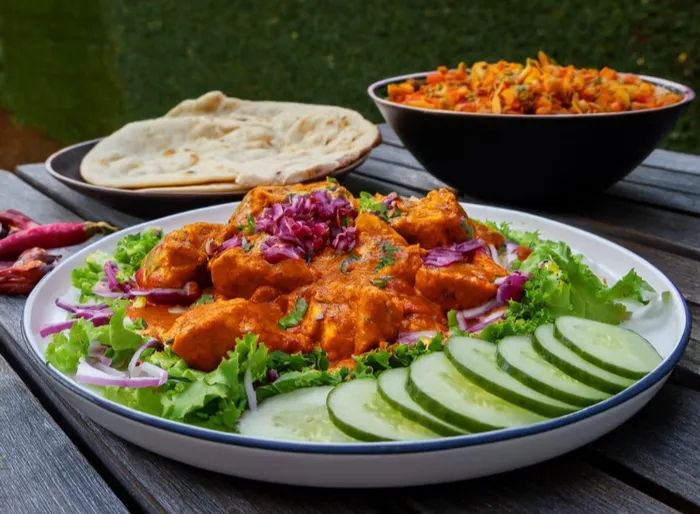The surprising health benefits of Indian cuisine
Diet

The writer says the spices used in Indian cooking has many health benefits.
Image: Supplied
"I AM A self-confessed curry queen" is probably a statement you would never expect to hear a dietitian say, but I proudly am, after all, I’m an Indian and a dietitian.
Whether it’s eating or cooking, I love a good curry. Unfortunately, neither curries nor Indian food have been associated with healthy eating or considered as part of a healthy diet. In practice, I find an ever increasing number of Indian clients trying to completely avoid a cultural diet in the pursuit of a bland, no spice, Western way of eating.
While curries have some negative effects on one’s health, research is emerging which proves that the health benefits of an Indian diet in moderation, may actually outweigh the negative effects. With the ever-increasing rates of lifestyle diseases such as diabetes, hypertension, cholesterol and obesity within the Indian community, it may be easy to understand the strong urge to remove traditional foods.
Indian foods are generally known to contain large amount of fats and oils (including clarified butter or ghee), as well as refined carbohydrates, such as white flour (used in roti and snacks) and sugar (used in Indian sweet dishes).
So, how is it possible that Indian cuisine could be considered healthy?
I would like to say that as an Indian dietitian, we can get it right, and still “curry” on.
The Indian population accounts for 1/6th of the world’s population with 40% of the Indian population being vegetarian. Research has shown that men in the USA have a 23 times higher risk of developing prostate cancer compared to men in India. American women are also 9 times more likely to be diagnosed with endometrial cancers and both American men and women are 10 times more likely to develop colorectal cancers compared to Indians.
The reason for these differences maybe the usage of the wide range of aromatic herbs and spices, which not only raise the flavour profile of Indian meals but also contain immense health benefits.
Common ingredients used in curries and their potential health benefits
- Turmeric: Is currently one of the most popular spices within the research world. Turmeric, also known as Haldi (Hindi) or Manjal (Tamil), has an active ingredient called “curcumin” that has been found to reduce the risk of cancer, improve blood pressure, and improve the body’s inflammation response and blood sugar levels.
- Tomatoes: Used as the base of most curries, it carries an antioxidant (anti-cancer) called lycopene, which significantly reduces one’s risk of cancer. The best way to eat tomatoes is when it is cooked in a small amount of oil as the lycopene is then more active. So yes, cooked tomatoes are more healthier than raw ones.
- Jeera/cumin: Improves blood sugar levels and promotes weight loss.
- Cinnamon: Improves blood sugar levels.
- Green chillies: Are high in vitamin C and also reduces the risk of cancer.
- Ginger: This root has been found to improve symptoms of osteoarthritis, migraines, muscle pain, blood sugar levels, while also helping with a fatty liver.
- Garlic and onion: Are high in antioxidants and have an antibacterial and anti-fungal benefit. Garlic also reduces inflammation, one’s risk of cancer, stroke and heart disease.
- Dhania/coriander: Reduces uric acid levels thereby reducing the symptoms of gout. As one can see, there appears to be numerous health benefits for most of the ingredients used in our daily Indian meals. Bearing this in mind, making small changes to cooking Indian meals could bring about big rewards to mitigate the negative aspects of an Indian diet.
Health benefits may be gained as follows
- Reduce the amount of oil or fat used when cooking Indian meals.
- Try to choose healthier options such as canola and olive oil.
- Using 1 teaspoon of oil per person in the household when cooking should also be used as a guide to reduce oil usage.
- Avoid large amounts of refined products such as sugar and white flour. Rather opt for brown flour rotis and keep enjoying sweetened foods only on special occasions.
- Choose vegetable curry dishes more often and limit red meat to no more than twice a week.
- For those suffering from reflux or stomach ulcers, reducing the quantity of spices used during cooking may help improve symptoms of discomfort. So, my recommendation would be to “curry” on with smart changes.
A dietician's thoughts: Did you know that the origin of the word “curry" is actually the British version of the Tamil word “Kari” which in English means sauce or gravy? Interestingly, the word “curry" does not actually exist in any Indian language and is more a Western term.

Verisha Rugbur
Image: File
Verisha Rugbur is a dietician and the founder of Diet Rite Dietitians. Email: [email protected]. Call 082 495 4954. Visit www.dietrite.co.za.
Related Topics: